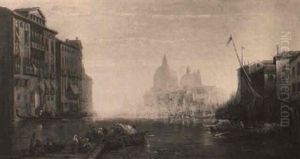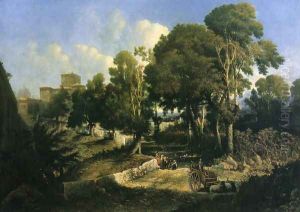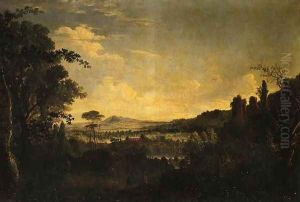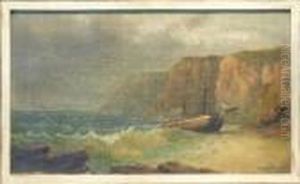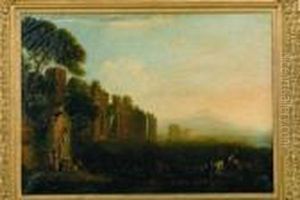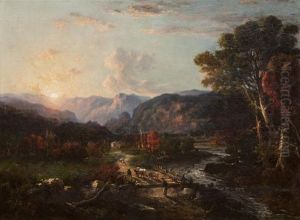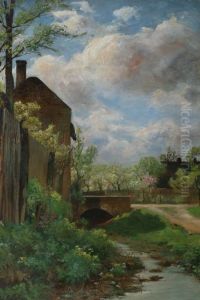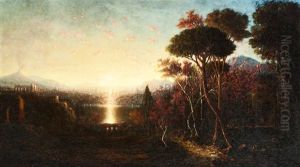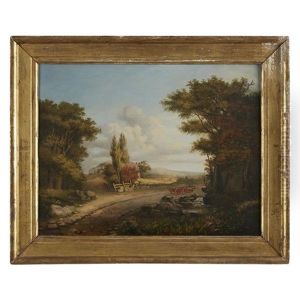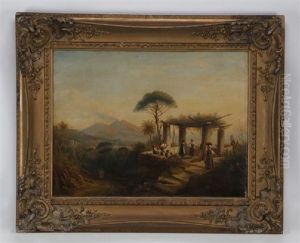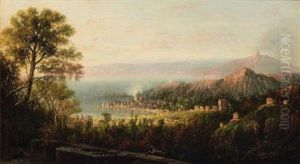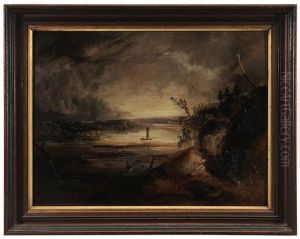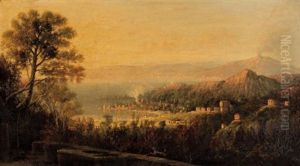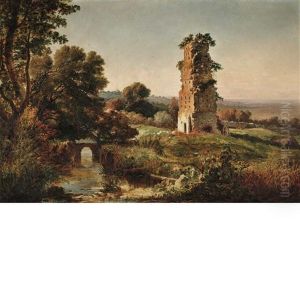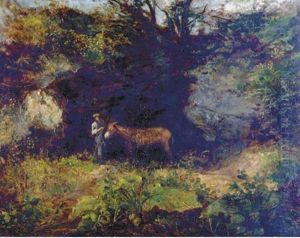George Loring Brown Paintings
George Loring Brown, also known as 'G.L. Brown,' was a prominent 19th-century American landscape painter, born on February 2, 1814, in Boston, Massachusetts. He showed an early interest in art and began his artistic education in his teenage years under the mentorship of the esteemed engraver and landscape painter Alvan Fisher. Brown's initial work mainly included engravings and lithographs, which were popular mediums of the time.
Brown's career evolved significantly after he decided to move to Europe in 1832 for further study and inspiration. He spent considerable time in Italy, particularly in Rome, where he was deeply influenced by the works of Claude Lorrain and other classical landscape painters. During his time abroad, Brown honed his skills in depicting light and atmosphere, which would become hallmarks of his later works.
Upon his return to the United States in 1839, Brown had developed a distinctive style characterized by its romantic portrayal of European and American landscapes. His works often featured dramatic skies and an idealized representation of nature, which appealed to American audiences who were fascinated by the picturesque European scenery. Despite his success, Brown returned to Europe in 1840 and lived there for the next 24 years, mainly in England and Italy, where he continued to paint and exhibit his works.
In 1864, Brown decided to move back to the United States, settling in Malden, Massachusetts. During his later years, he remained an active member of the artistic community. He continued painting and was involved in various art organizations, including the Boston Art Club. Brown passed away on June 25, 1889, in Malden.
Throughout his career, George Loring Brown's works were exhibited widely, and he enjoyed the patronage of notable figures of his time. His paintings are now part of several important museum collections, including the Museum of Fine Arts, Boston, and the Metropolitan Museum of Art in New York. Brown's legacy lives on as a representative of the romantic landscape tradition in American art, bridging the gap between European influence and the burgeoning art scene in America during the 19th century.







